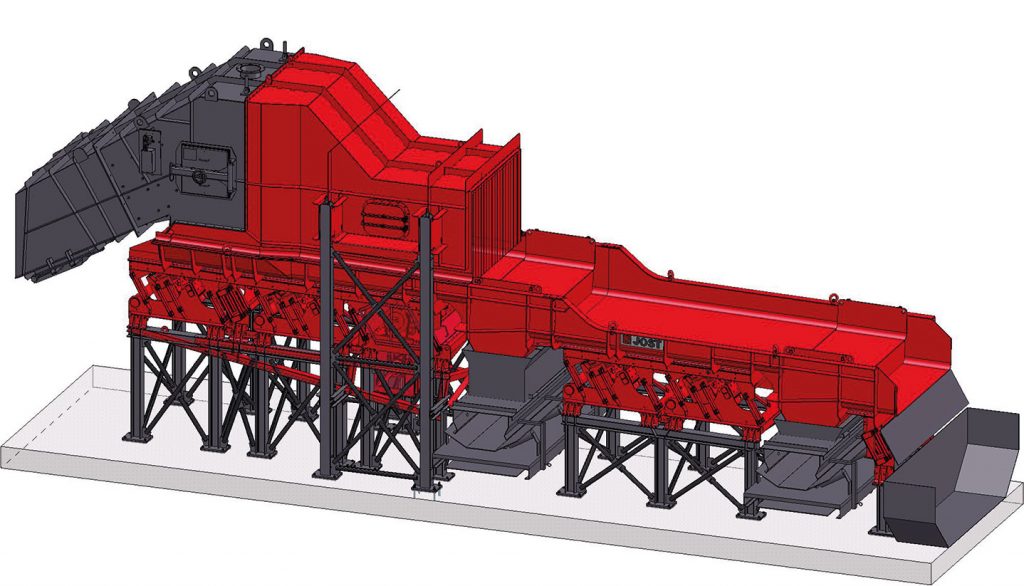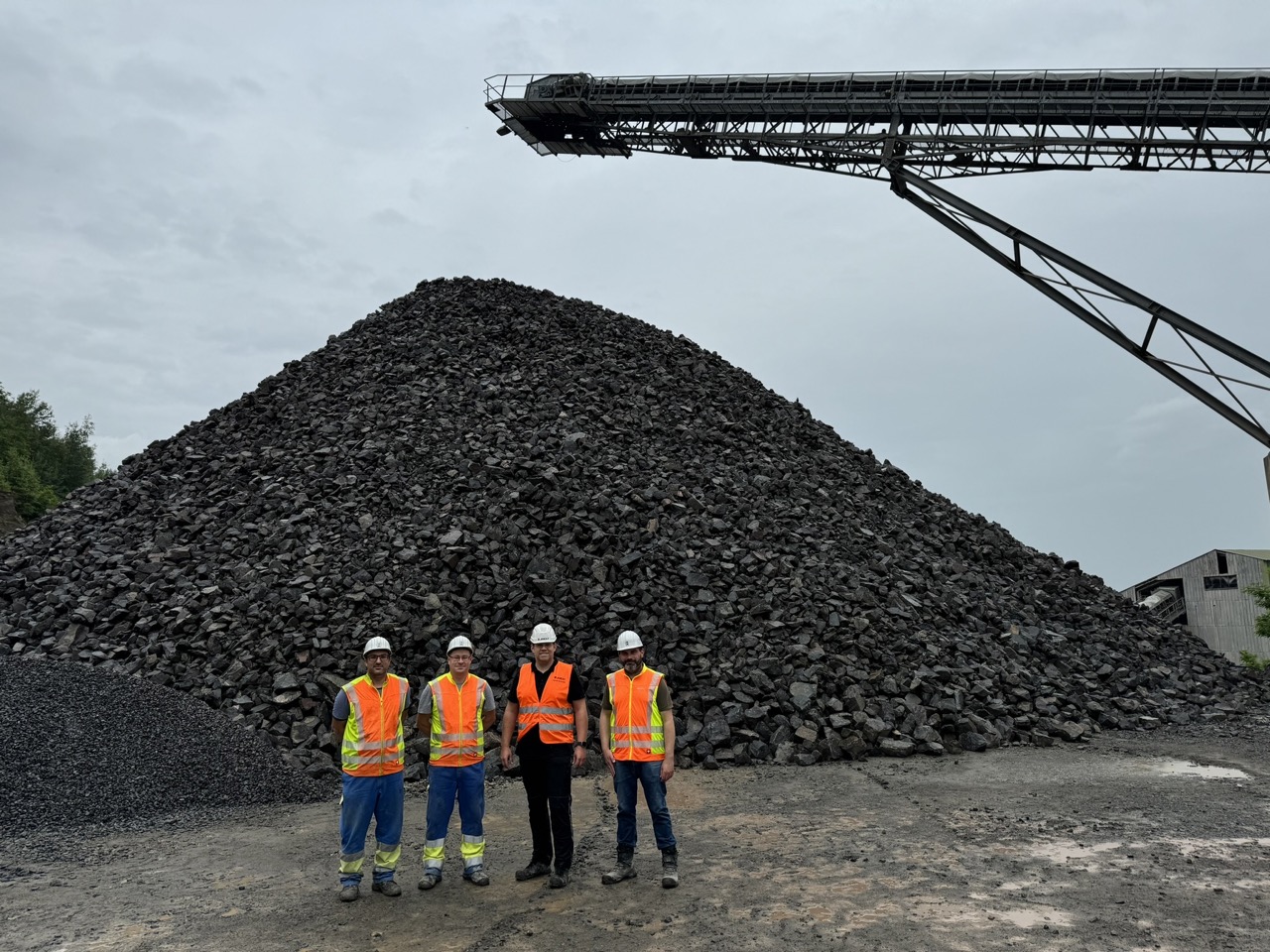RECYCLING
Unique feature makes JOEST the favourite in waste incineration

At the end of 2017, JOEST will supply four resonance conveyors to Hitachi for a waste-to-energy plant.
In the north of England, an existing power plant is currently being expanded to include a second waste incineration plant for household and industrial waste. Mass-compensated resonance conveyors (FSM) from JOEST will be used to separate the coarse and fine waste slag.
The expanded Ferrybridge waste-to-energy plant near Manchester will incinerate around 566,000 tons of waste each year and convert it into energy. To transport the waste, four FSMs from JOEST are being installed to carry out the initial separation of the coarse and fine waste slag in order to protect the conveyor belts.
Two conveyor belts, which are stored below the conveyors, can be fed by the two split grates that are installed in each resonance conveyor. Since the belts do not run in parallel due to the distribution of the waste, it was necessary to ensure that only one is constantly being fed, and that the changeover between the two conveyor belts can take place within a very short time. For this reason, JOEST has developed special cover plates that make it possible to complete the changeover on all four machines with a system downtime of just 20 minutes.
During the development phase, particular attention was paid to the high demands placed on the welding technology, as well as the painting and coating of the system. In terms of the welding results, it was important to ensure a robust design, as sometimes larger parts are transported on the resonance conveyor. The waste slag is also chemically aggressive, which is why it was essential to apply a durable coating. The on-site conditions presented an additional problem — it was not possible to attach the motor and crank drive in series underneath the machine due to a lack of space. As a result, the machine had to be redesigned so that the motor could be attached vertically to the machine, underneath the drive unit.
When it comes to mass-compensated resonance conveyors, JOEST has an absolute unique selling point. Its machines are able to transport the waste slag and separate the coarse and fine material while conducting only a minimum of their vibrations into the ground. Many customers of the JOEST group have depended on this feature for several decades.
Weitere Beiträge
JOEST delivered two high-performance vibrating feeder including tunnel frame, discharge chute and needle gate, each one feeding gabbro up to an edge length of 700 mm as a free stockpile discharge. Our focus was on a robust, blockage-free, wear-optimized and installation-friendly design.
Under the motto #JOESTogether, we organized for the first time an EM pack-watching on our site. It was a fantastic event where we celebrated our community and team spirit.
On the occasion of the farewell of the long-serving managing director, the entire staff of JOEST organized a collective fundraising campaign for the nearby children’s hospice Gut Feismann. A total of over 1,200 euros was collected by the #JOESTeam and ultimately rounded up to 3,500 euros by the management.
Münster
The Job Fair 2024 in Münster was a complete success for us. We are especially proud of our first-time participation as exhibitors.






